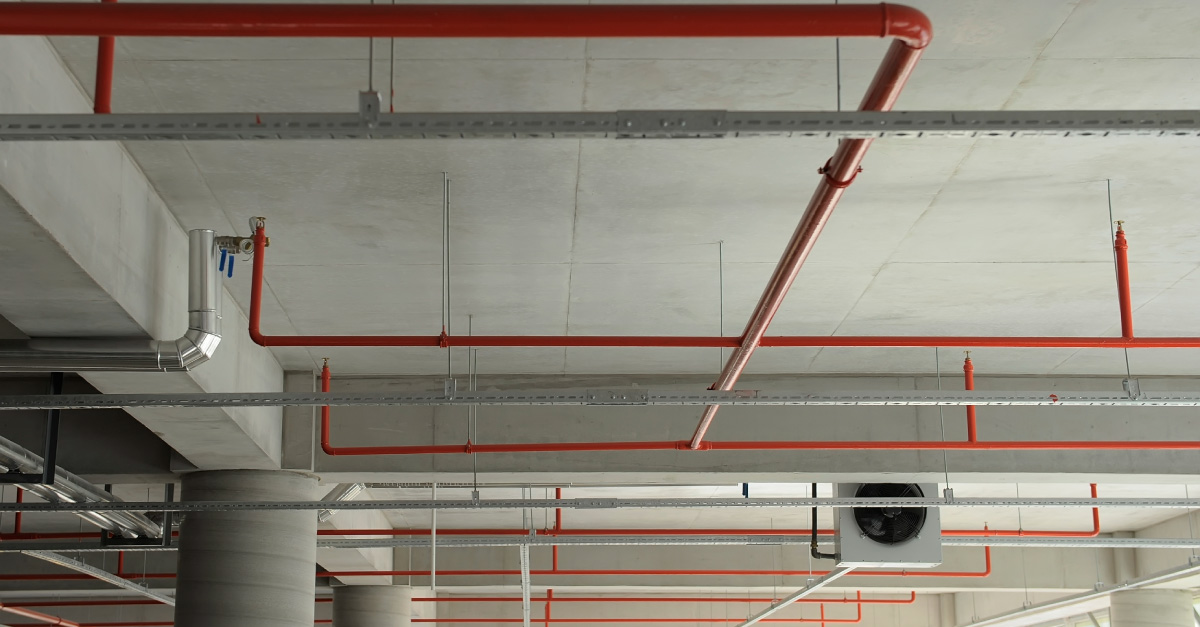Published July 25, 2018

 When we look up at the ceiling, most of us see either a sheet-rocked ceiling or acoustical tiles. In industrial plants, there’s a good chance there’s a lot of exposed machinery, process piping and fire protection piping.
When we look up at the ceiling, most of us see either a sheet-rocked ceiling or acoustical tiles. In industrial plants, there’s a good chance there’s a lot of exposed machinery, process piping and fire protection piping.
Just because I’m in the business, when I enter a public facility, I look up at the ceiling to verify that there’s a sprinkler system in place. I suspect lots of you do that too. We see sprinkler heads peeking out through the ceiling tiles or some type of fire alarm.
In most cases, water. And because the water is usually not treated, there’s a lot of junk in there. Over many years of use, the water becomes corrosive and tends to wear down the mechanical parts. Here’s a picture of a valve that we recently ran across. When I first saw the picture, it reminded me of a picture of the Grand Canyon!
We recently received a call from a new client saying that air was leaking out of a sprinkler valve. Our service manager dispatched a crew and, upon reaching the client site, found that air was leaking out of a ball drip.
A ball drip is installed at the low point in the fire department connection piping of an automatic sprinkler system. When the pressure goes below a certain point, the ball drip automatically re–opens, permitting this piping to drain and thereby preventing freezing.
The techs notified the local fire department, and then proceeded to shut the system down. Once the system was deactivated, they removed the face plate on the valve and found that scale and rust had built up so bad that the clapper inside the valve could not close tightly, thus allowing air to escape though the ball drip. This was causing the compressor to continuously run to maintain the system pressure.
Our techs cleaned the valve, replaced the gasket, charged the system with air; however, the system was still not holding pressure. We recommended that the client replace the valve; he agreed and we returned to install a new valve. Hopefully the new valve will last as long as the old one we replaced.
Two National Fire Protection Association (NFPA) standards, NFPA 13 and NFPA 25 provide recommendations for flushing requirements for above ground sprinkler system piping. NFPA 13 deals with new system installations, while NFPA 25 is the Standard on Inspection, Testing and Maintenance of Water Based Extinguishing Systems.
The NFPA is a global nonprofit organization, established in 1896, devoted to eliminating death, injury, property and economic loss due to fire, electrical and related hazards. Insurance company requirements and the Local Authority Having Jurisdiction (LAHJ) may differ and be more stringent than NFPA recommendations.
Have an additional question? Contact our Service Manager by phone at 508.644.2221 ext 109.
Be efficient with your time, and trust PSI to be efficient with your piping project. I promise in the long run, you will be thrilled. Have any questions? Drop us an email, psi@PipingSystemsIns.com or give us a call today at 508.644.2221.